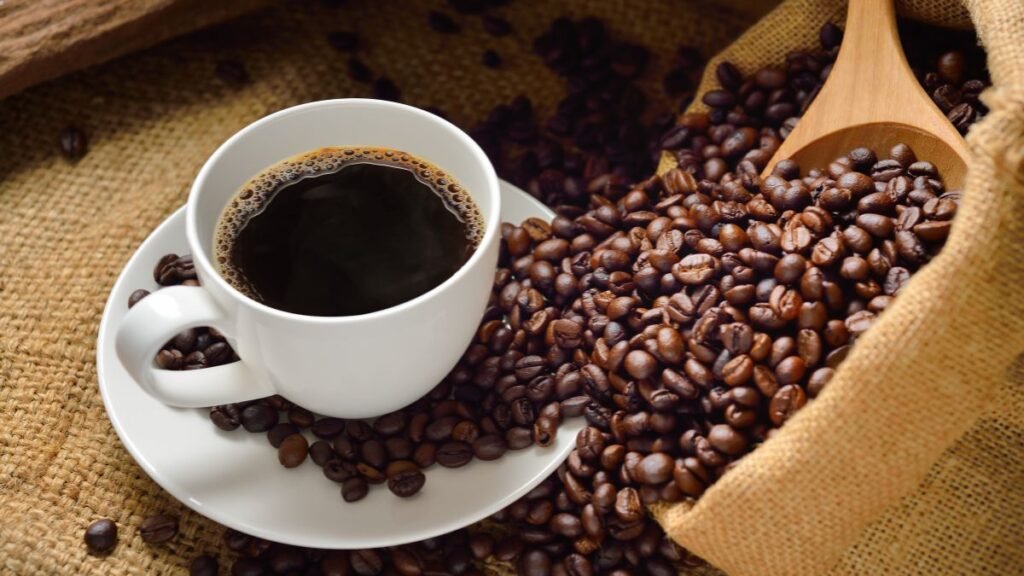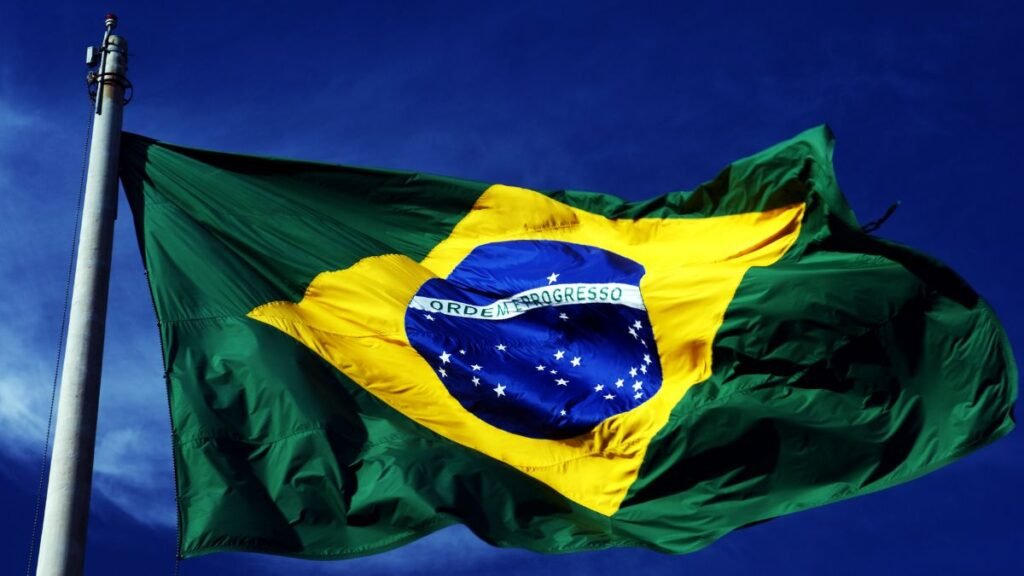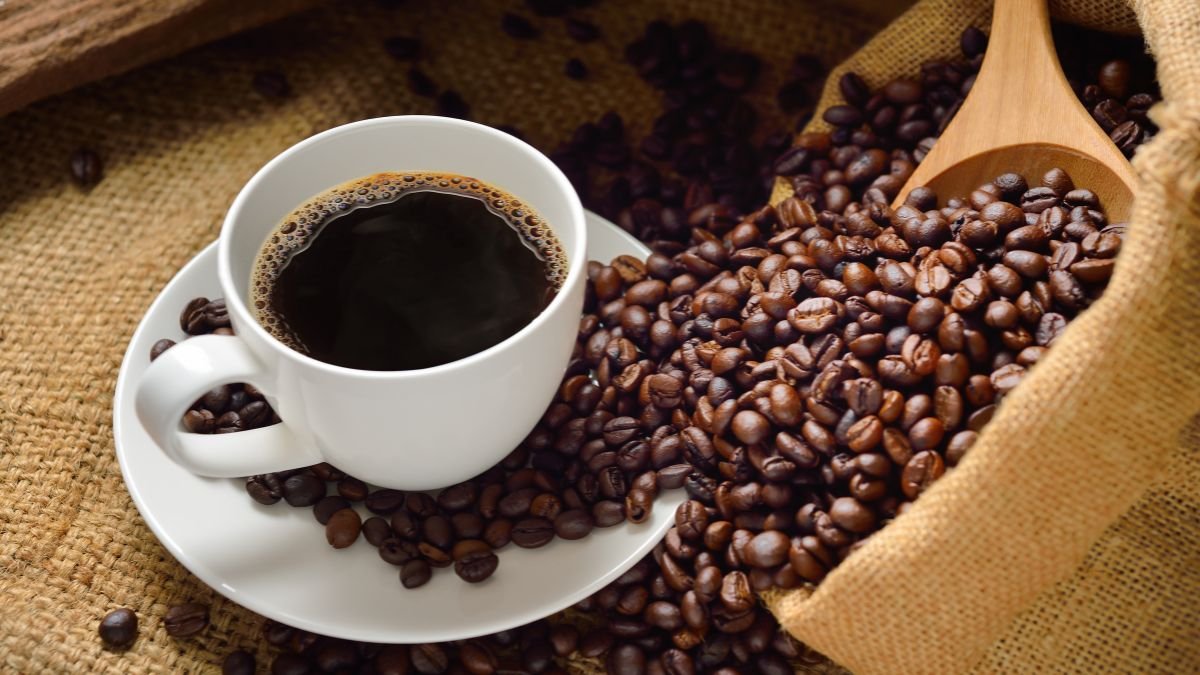Introduction
Did you know the world’s fifth-largest country hides surprises at every turn? From its vibrant culture, which blends indigenous, African, and European influences, to jaw-dropping landmarks like the Christ the Redeemer statue and the Amazon Rainforest, this South American gem stands out in ways few expect.
Let’s dive into what makes it so unique, including its lively festivals such as Carnival, where samba rhythms fill the streets, and its diverse culinary scene that features dishes like feijoada and acarajé, showcasing the rich flavors of the region. These are just a few of the fascinating Brazil Curiosities that make this country a must-visit.

Home to over 200 million people, this nation spans 8.5 million square kilometers. It’s the only place where Portuguese dominates in the Americas. Soccer legends like Pelé and UNESCO-recognized architecture add to its global appeal.
Coffee lovers rejoice—it produces 66.4 million bags annually. Sugarcane thrives too, with 42.7 million tons harvested yearly. Four time zones and 4,000+ airports keep this vast land connected.
Key Takeaways
- Fifth-largest country globally with diverse landscapes
- Portuguese is the primary language, unlike neighboring nations
- Home to legendary soccer achievements and modernist UNESCO sites
- Leads in coffee and sugarcane production worldwide
- Cultural fusion of African, Portuguese, and indigenous roots
Introduction to Brazil Curiosities
A melting pot of ethnicities and traditions, this land tells a story of unity in diversity. As South America’s largest country, it spans 3.28 million square miles, larger than the contiguous U.S. Its vastness hosts ecosystems from rainforests to megacities.
The people reflect this richness. Recent data shows 45.3% identify as mixed race, 43.5% as White, and 10.2% as Black. This blend stems from centuries of migration, indigenous heritage, and African influences.
Portuguese colonization began in 1500, shaping the nation’s language and architecture until independence in 1822. Unlike its neighbors, it developed a unique culture of “racial democracy”,a fusion celebrating shared identity over division.
| Ethnic Group | Percentage |
|---|---|
| Mixed Race | 45.3% |
| White | 43.5% |
| Black | 10.2% |
This history sets the stage for exploring geographic wonders, cultural fusions, and iconic symbols. From the Amazon’s depths to Carnival’s rhythms, every facet reveals deeper layers.
Brazil’s Unique Geography
From dense jungles to sprawling wetlands, the geography here is as diverse as its culture. This largest country in South America spans ecosystems that range from the world’s biggest tropical forest to surreal coastal dunes.
Amazon Rainforest: The World’s Largest Tropical Jungle
Covering 60% of the Amazon rainforest, this region is a biodiversity hotspot. It shelters 600 mammal species, 1,500 fish types, and over 100,000 insects. The rainforest acts as the planet’s lungs, producing 20% of Earth’s oxygen.
Yet, deforestation remains a challenge. In 2022, over 11,500 square kilometers were lost, a threat to this irreplaceable ecosystem.
| Species Group | Count |
|---|---|
| Mammals | 600+ |
| Fish | 1,500+ |
| Insects | 100,000+ |
Pantanal: Earth’s Biggest Wetland
Spanning 150,000 square kilometers across three countries, the Pantanal is a wildlife paradise. Jaguars, caimans, and capybaras thrive in its seasonal floods. Unlike the Amazon, its open landscapes make animal sightings effortless.
Stunning Coastline and Hidden Gems
The 7,400-kilometer coastline boasts 2,095 beaches, from Copacabana’s vibrancy to secluded coves. Don’t miss Lençóis Maranhenses National Park, where rainwater transforms sand dunes into turquoise lagoons.
With 17 coastal states, each offers unique landscapes, proof that nature’s artistry knows no bounds.
Brazil’s Cultural Diversity
São Paulo’s streets whisper stories of a unique transcontinental heritage. Few countries blend traditions as seamlessly as this vibrant land, where immigrant roots and indigenous history intertwine.
A Home Away from Japan
In São Paulo, 1.9 million Japanese-Brazilians form the largest Japanese diaspora outside Japan. Their journey began in 1908 with the Kasato-Maru ship, carrying laborers to coffee plantations.
Today, their legacy thrives. Tempurá (a Portuguese-influenced dish) and taiko drumming highlight Nikkei contributions. The annual Japan Festival draws 180,000+ visitors to celebrate this fusion.
African and Portuguese Threads
African influences pulse through culture, from capoeira’s martial artistry to samba’s rhythmic heartbeat. Enslaved Africans brought these traditions, now national symbols.
Portuguese colonization left churches and cobblestone streets. Over 86% of the people identify as Catholic, yet syncretic faiths like Candomblé blend African spirits with saints.
| Cultural Influence | Modern Manifestation |
|---|---|
| Japanese | Tempurá cuisine, Liberdade district |
| African | Capoeira, Carnival samba schools |
| Portuguese | Baroque churches, language |
This mosaic makes the country a living museum of global heritage—one where every tradition finds a home.
Brazil’s Official Language: Portuguese
Unlike its neighbors, this country south of the equator traces its official language to European explorers. Portuguese arrived in 1500 with colonial ships, eventually displacing indigenous Tupi-Guarani dialects. Today, it’s spoken by 99% of the population, the sixth most used language globally.
Modern Brazilian Portuguese differs from its European counterpart. Pronouns like “você” replace formal “tu”, and verbs conjugate more simply. These changes reflect 500 years of localized evolution.
Literacy rates hit 92.6% nationally in 2012, with southern states like Santa Catarina reaching 96%. Education gaps persist in rural areas, but urban centers show near-universal proficiency.
| Region | Literacy Rate | Notable Languages |
|---|---|---|
| South | 96% | German, Italian |
| Southeast | 94% | Japanese (Liberdade district) |
| North | 88% | Indigenous Nheengatu |
Immigrant communities add linguistic diversity. Over 1.5 million German speakers cluster in Rio Grande do Sul, while Italian influences flavor Santa Teresa’s dialect. Yet Portuguese remains the unifying thread across this south american tapestry.
Brazil’s National Dish: Feijoada
Food tells the story of a nation, and nowhere is this clearer than in its iconic dishes. Feijoada, a hearty stew of black beans and pork, is the national comfort food. Born from enslaved communities’ resourcefulness, it transformed leftover cuts into a symbol of resilience.
Traditional recipes include smoked sausage, ribs, and dried beef, simmered for hours. Orange slices garnish the dish, cutting through the richness. Families often enjoy it on Wednesdays or Saturdays, paired with rice, collard greens, and farofa (toasted cassava flour).
A Taste of Regional Diversity
From north to south, feijoada adapts to local tastes. Coastal states add seafood, while Minas Gerais favors simpler versions. Porto’s influence lingers in feijoada à moda do Porto, using red beans instead of black.
| Region | Variation | Key Ingredient |
|---|---|---|
| Rio de Janeiro | Classic | Pork ears, tails |
| Bahia | Moqueca-inspired | Dendê oil, shrimp |
| South | German twist | Smoked sausage |
Other Must-Try Brazilian Foods
Beyond feijoada, the country’s culinary map dazzles. Moqueca, a coconut milk-based seafood stew, shines in Bahia. Street vendors serve coxinha—crispy chicken croquettes—a snack beloved by people nationwide.
In the northeast, acarajé (black-eyed pea fritters) honors Afro-Brazilian culture. Southern pubs pair chopp (draft beer) with fondue, reflecting German immigration. Each bite is a passport to history.
The Symbolism of Brazil’s Flag
Few national symbols tell a richer story than this country‘s vibrant flag. Adopted in 1889, its design merges nature, history, and philosophy into a single emblem. Each element, from the green field to the celestial stars holds intentional meaning.

The Yellow Diamond: Representing Gold Reserves
The bold yellow rhombus honors the nation’s mineral wealth. Historically, gold mining shaped economies in Minas Gerais and beyond. Green surrounds it, symbolizing lush forests that blanket the land.
The Stars: A Celestial Map of Brazil
Twenty-seven stars mirror the night sky over Rio on November 15, 1889, the day the republic was proclaimed. They mark the 26 states and Federal District, positioned exactly as they appear astronomically.
- Green background: Vast Amazon rainforests
- Yellow diamond: Gold reserves that fueled the world’s 18th-century gold rush
- Blue circle: The sky at Rio’s dawn of independence
- White band: Peace and the positivist motto “Ordem e Progresso” (Order and Progress)
The flag evolved with the nation. In 1992, four stars were added to represent new states. Unlike the 1822 imperial flag, today’s design reflects unity and forward vision, a tapestry woven from earth and sky.
Brasília: Brazil’s Modernist Capital
A city born from blueprints and bold visions, Brasília redefined urban design in the 20th century. Inaugurated in 1960 by President Juscelino Kubitschek, it replaced Rio de Janeiro as the capital, a planned metropolis carved into the savanna.
Architect Oscar Niemeyer transformed concrete into poetry. His Cathedral of Brasília soars with 16 parabolic columns, while the National Congress mirrors a pair of futuristic bowls. UNESCO declared the city a World Heritage site for its “urban planning innovation.”
From above, the layout resembles an airplane, government buildings form the cockpit, while residential wings stretch symmetrically. This modern design aimed to symbolize progress, a stark contrast to colonial-era capitals like Salvador.
Population exploded from 140,000 in 1960 to 4.8 million today. Yet the capital retains its experimental spirit, proving that cities can be both functional and artistic masterpieces.
Brazil’s Dominance in Soccer
Five World Cup trophies gleam in the cabinet of a country that breathes soccer. No other nation has lifted the FIFA trophy more times, cementing its status as the sport’s global powerhouse. From Pelé’s magic to Marta’s artistry, the legacy spans generations.
The men’s team boasts victories in 1958, 1962, 1970, 1994, and 2002, a history of flair and tactical brilliance. Pelé alone netted 77 goals for the national squad, part of his record 1,281 career strikes. His name became synonymous with the beautiful game.
| Tournament | Year | Iconic Moment |
|---|---|---|
| World Cup | 1970 | Pelé’s header vs. Italy |
| Copa América | 2019 | 9th title victory |
| Confed Cup | 2013 | Neymar’s MVP performance |
Rio’s Maracanã Stadium, seating 78,838 fans, hosted the 1950 and 2014 finals. Though the 1950 loss to Uruguay stung, it fueled the nation’s relentless pursuit of glory. Today, it’s a pilgrimage site for soccer lovers.
Beyond grass pitches, soccer thrives in unexpected forms. Futsal, born from 1930s Uruguayan immigrants, became a training ground for stars like Ronaldinho. Meanwhile, Copacabana’s beach matches showcase jaw-dropping volleys—beach soccer’s freestyle roots.
The women’s team, though yet to win a world title, reached the 2023 quarterfinals. Marta’s six FIFA Player of the Year awards prove the country’s talent pipeline never dries up. For this soccer-obsessed land, the next trophy is always within reach.
Brazil’s Coffee and Sugarcane Production
Golden fields and aromatic plantations define this nation’s agricultural might. Two crops, coffee and sugarcane, fuel both local traditions and global markets, making the country a key player in agribusiness.

A Global Coffee Powerhouse
The land leads as the world’s largest coffee producer, with 66.4 million 60kg bags harvested in 2023–24. Minas Gerais, São Paulo, and Paraná form the “coffee belt,” where ideal climate and altitude yield premium beans.
Historical roots run deep. The 18th-century boom transformed economies, though today’s farms blend tradition with tech. Challenges like fair trade certification persist, but BNDES financing drives modernization.
Sugarcane: Sweet Fuel for the World
Sugarcane thrives equally, with 42.7 million metric tons produced each year. Since 1975, ethanol from sugarcane has powered cars, cutting fossil fuel reliance. Mills now export raw sugar and renewable energy.
- Top Coffee Regions: Minas Gerais (50% output), Espírito Santo (robusta beans)
- Sugarcane Ethanol: 27 billion liters annually, reducing emissions by 90% vs. gasoline
- Innovation: GPS-guided harvesters and drought-resistant cane varieties
Together, these crops showcase how fertile land and ingenuity sustain a thriving agricultural legacy.
Brazil’s Time Zones
Timekeeping here isn’t simple, imagine scheduling meetings across four different clocks. This vast country spans GMT-2 to GMT-5, matching its geographic enormity. For comparison, the contiguous U.S. fits within three zones despite being smaller.
Western states like Acre follow GMT-5, while island territories like Fernando de Noronha use GMT-2. The gap causes headaches: a 9 AM conference call in São Paulo (GMT-3) means 7 AM in Manaus (GMT-4). Businesses often default to Brasília’s time to streamline operations.
| Time Zone | Region | UTC Offset |
|---|---|---|
| GMT-2 | Atlantic Islands | Fernando de Noronha |
| GMT-3 | Most populated | São Paulo, Rio |
| GMT-4 | Western Amazon | Manaus, Rondônia |
| GMT-5 | Acre State | Border with Peru |
Acre’s time zone sparked debate. In 2008, 59% of voters chose to align with GMT-4, but Congress reversed it a year later. Locals argued dark mornings harmed productivity. The land’s east-west stretch, 4,300 km, makes uniformity impractical.
Daylight saving time adds another layer. Southern states adopt it (October–February), but northern regions skip it, equatorial daylight barely fluctuates. National TV schedules list dual airtimes, a unique part of daily life here.
Christ the Redeemer and Other Iconic Statues
Towering over Rio’s skyline, an iconic figure watches silently, arms outstretched in eternal welcome. The Christ the Redeemer statue isn’t just a religious symbol; it’s a testament to human ingenuity and national identity. Completed in 1931, this 98-foot-tall marvel blends soapstone and steel atop Corcovado Mountain.
Its 92-foot arm span mirrors the cross, visible from nearly every city neighborhood. In 2007, it earned a spot among the world’s New7Wonders, drawing 2 million annual visitors. Yet lightning strikes and erosion demand constant upkeep—a challenge for engineers.
Christ the Protector: A Modern Giant
In 2022, Encantado unveiled Christ the Protector, surpassing Rio’s icon at 118 feet tall. This newer statue features an elevator to a panoramic viewing deck—offering vistas of the Taquari Valley. Unlike its predecessor, it incorporates LED lighting for nighttime visibility.
| Statue | Height | Material | Unique Feature |
|---|---|---|---|
| Christ the Redeemer | 98 ft | Soapstone/steel | UNESCO site |
| Christ the Protector | 118 ft | Concrete/fiberglass | Elevator access |
Beyond Rio, Juazeiro do Norte’s 89-foot Padre Cícero statue honors the “Father of the Poor.” Located in Ceará state, it reflects northeastern Brazil’s deep Catholic roots. Each monument tells a story, carved not just in stone but in the hearts of millions.
Brazil’s Carnival: The World’s Largest Party
Imagine streets pulsing with rhythm, where two million revelers dance in unison. This isn’t fantasy, it’s Rio’s Carnival, the world’s largest celebration of music and movement. For five days each February, the city transforms into a kaleidoscope of costumes, samba beats, and pure joy.
The Sambódromo parade grounds host 90,000 spectators nightly. Top samba schools compete with floats stretching over 2,000 feet. Each school’s performance tells a story through choreography, costumes, and original songs, a year’s work condensed into 80 minutes.
| Aspect | Scale | Impact |
|---|---|---|
| Attendance | 2M+ daily | $1B+ tourism revenue |
| Costume Production | 1,800 seamstresses per school | Handmade designs using 3 miles of fabric |
| Security | 15,000 officers deployed | Advanced facial recognition tech |
Beyond the stadium, people flood 500+ blocos (street parties). These vibrant gatherings showcase the culture’s inclusivity—LGBTQ+ groups like Banda de Ipanema draw 40,000+ dancers. Local bars serve caipirinhas as DJs spin remixed samba tracks.
Preparation begins months early. Communities fundraise through feijoada dinners and dance workshops. For many, Carnival isn’t just entertainment—it’s a way of life that unites all social classes under sequins and feathers.
Brazil’s Indigenous Tribes
Ancient wisdom echoes through the rainforest, where indigenous traditions thrive against modern challenges. Over 305 tribal groups speak 274 languages, a linguistic diversity unmatched in the Western Hemisphere. Their ancestral land covers 13% of national territory, though mining and logging threaten these protected zones.
The Yanomami face urgent crises as illegal gold miners invade their territory. Mercury pollution has poisoned rivers, causing health emergencies. In 2023, the government deployed troops to expel 20,000 miners, but enforcement remains weak across remote states.
Contrastingly, the Kayapo people showcase successful environmental activism. Their warriors patrol borders with drones, blocking deforestation. Recent victories include stopping dams that would flood sacred sites. These efforts protect countless species in the Amazon basin.
| Tribe | Challenge | Solution |
|---|---|---|
| Yanomami | Illegal mining | Military operations |
| Kayapo | Deforestation | Technology patrols |
| Guarani | Land rights | Legal campaigns |
Health disparities persist, with indigenous infant mortality 60% higher than national averages. Vaccination gaps and malnutrition compound risks. The 2023 Amazon Summit pledged $300 million for clinics and clean water projects, a step toward justice.
Tupi-Guarani linguistic roots still influence modern Portuguese. Words like abacaxi (pineapple) and mandioca (cassava) entered everyday speech. This cultural legacy survives despite centuries of pressure to assimilate.
Conclusion
From samba beats to towering statues, this country weaves a vibrant cultural tapestry. Its Portuguese roots, soccer dominance, and Amazonian wonders form a trinity of global fascination.
The world admires its unique synthesis, where African drumming, Indigenous wisdom, and immigrant traditions harmonize. Yet balancing progress with rainforest preservation remains a critical challenge.
For travelers, the culture shines brightest in regional gems. Attend Bahia’s capoeira circles or hike Pantanal’s wetlands to witness nature’s grandeur.
Key facts to remember:
- Largest Portuguese-speaking population
- Five-time soccer World Cup champion
- 17% of Earth’s biodiversity
Every visit reveals new layers. The people’s warmth and landscapes’ diversity promise unforgettable discoveries. Learn more Brazil Culture.
FAQ
What makes the Amazon Rainforest unique?
The Amazon Rainforest is the world’s largest tropical jungle, covering over 2.1 million square miles. It’s home to countless species and plays a vital role in Earth’s oxygen production.
Why is Brazil’s cultural diversity significant?
The nation blends African, Portuguese, and indigenous influences, creating a rich heritage. It also hosts the largest Japanese diaspora outside Japan.
What is Brazil’s national dish?
Feijoada, a hearty black bean stew with pork, is the country’s signature dish. It reflects its colonial history and remains a cultural staple.
What does Brazil’s flag symbolize?
The flag features a yellow diamond representing gold reserves and stars mapping the night sky over Rio de Janeiro when the republic was founded.
Why is Brasília an architectural marvel?
Designed by Oscar Niemeyer, the capital showcases modernist architecture and was built from scratch in just 41 months.
How dominant is Brazil in soccer?
The country has won five FIFA World Cup titles, more than any other nation, and produced legends like Pelé and Neymar.
What role does Brazil play in coffee production?
It’s the world’s largest coffee producer, supplying nearly a third of global demand, with plantations spanning Minas Gerais and São Paulo.
How many time zones does Brazil have?
The country spans four time zones due to its vast size, from UTC−2 to UTC−5.
What’s special about Christ the Redeemer?
This 98-foot-tall statue is an iconic symbol of Rio de Janeiro and one of the New Seven Wonders of the World.
Why is Carnival so famous in Brazil?
The festival attracts millions with its vibrant parades, samba music, and elaborate costumes, making it the planet’s biggest party.




